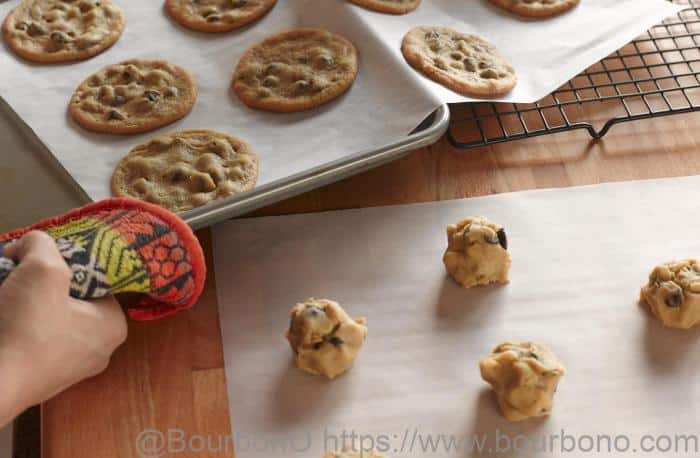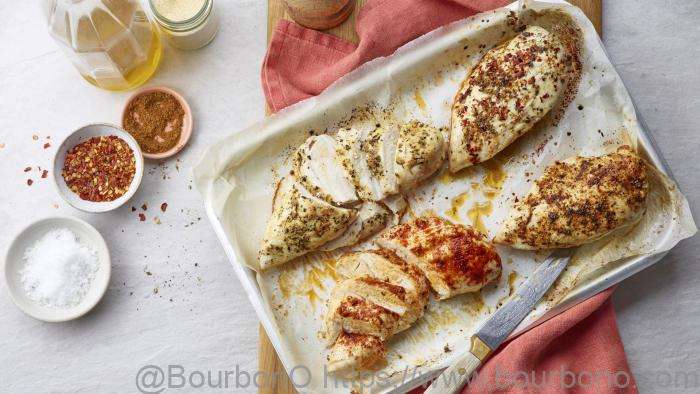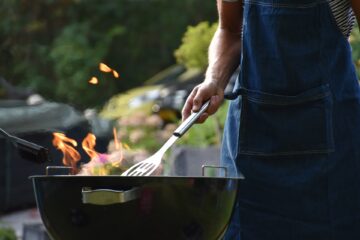Can you reuse parchment paper is still an unanswered question to many home cooks out there. Baking with parchment paper is such a delightful joy as it makes the clean-up way easier. Parchment sheets are coated in silicone. That’s why you can bake bread, cakes or cookies without worrying that they will stick to the baking tray. However, let’s find out if this kind of paper is safe to reuse or not in the article below.
When can you reuse parchment paper
Reusing parchment paper will help to reduce quite significantly your cost and waste per bake. You can use the parchment for at least one more round in the oven, as long as it doesn’t seem too messy. In fact with a single parchment sheet, you may be able to make at least 5 – 6 cookies batches. After a while, the corners of the parchment will turn into a light brown color. However, it can still hold up pretty well for a few more batches of dough.
Most parchment can also be reused with recipes that require higher baking temperatures. Such as the Pain au Levain dish, which bakes in the oven at 425-degrees F. Nevertheless, parchment paper degrades quicker when baked at higher temperatures. As a result, its life expectancy will also be reduced.
For recipes cooked at higher heat, it’s recommended to reuse your parchment up to 2 times. And it’s also advisable to line the baking tray with a sling of aluminum foil (4 – 5 inch in width). The aluminum foil will go under the parchment paper so that it can support the dough for the second time of use.

Related article: Can you put parchment paper in the oven – Tips for parchment sheet
Reuse parchment paper Method
There are many ways which allow you to reuse your parchment paper:
Baking cookie batches
Feel free to bake multiple batches of cookies with the same parchment on the same day. After one batch is finished cooking, simply transfer your already-baked cookies to a container. Then prepare a new batch using the same baking paper.
Some recipes may require a room or cold temperature surface before you place the dough on. In this case, wait for a while so that the parchment can cool down after taking a batch. And then proceed as instructed in the recipe.
Making roasts
Line the roasting pan with a used parchment paper before beginning roasting. The paper will absorb grease and help to distribute the heat more evenly. Most importantly, it’ll be extremely time-saving to clean up once you’re done cooking.
Roasting veggies
Slide the previously used baking paper on the baking tray. Then arrange your veggies on top of the paper and sprinkle some seasonings to your preference. As you won’t need to grease the baking tray, your intake of oil will be reduced, making the dish healthier.

Preparing a surface for decorating
The use of baking paper will also make the decorating steps much easier. The parchment can be used as a surface to decorate cakes, cookies and other bakes. The paper will collect all the mishaps and crumbs, allowing you to clean up your cooking area way faster. You can make use of extremely brittle and dark parchment for decorating and save the two-or-three-time used papers in other baking.
Parchment paper can also be folded into cone shapes and used as piping bags. These papers are coated in silicone and quite dense, they don’t leak or tear easily. That’s why they’re able to hold frosting.
You may find interesting: How long do you cook Hot Pockets in the microwave – Bourbon O’s tips
When to avoid reusing parchment paper
When it has gotten too wet, messy or greasy
You shouldn’t reuse parchment when it has gotten too wet, messy or greasy with anything that could burn on a second round of heating. Furthermore, avoid using a parchment sheet that has become brittle and dark. Because it will definitely make your food less tasty.
When you’ve used it to bake food with strong flavor
You should also discard your parchment if you’ve used it to bake something that has a really strong flavor. This way you will prevent the scent from affecting the next baking batch.

When it’s baked at higher than 450°F or for a long period of time
Most parchment sheets are oven-safe when baked at 425°F to 450°F. When you bake something higher than this temperature limit or for a long period of time, the exposed edges of the parchment will turn into a deep brown color and even start to smoke. We can assume that if you need to cook something at 450°F or higher, that parchment paper will no longer be able to go on a second trip through heat.
Is parchment paper recyclable?
Unfortunately, most baking papers are not made for recycling. There are two different types of parchment:
- Bleached parchment paper: not biodegradable and comes in white color and, heavily used
- Unbleached parchment paper: biodegradable and comes in brown color
However, baking paper is only as surface when baking. That’s why even the bleached parchment paper doesn’t transfer any kind of toxic material onto your food while baking in the oven. However, they’re not designed to be washable either.
For the question: “Can you reuse parchment paper?”, it’s safe to say that the answer is yes. Reusing baking papers not only helps reduce mess cleanup work but it’s also easy on your pockets. In today’s world, minimizing waste is of the essence to save the environment. Check out Bourbon O’s website if you have any other questions regarding cooking tips and recipes.




